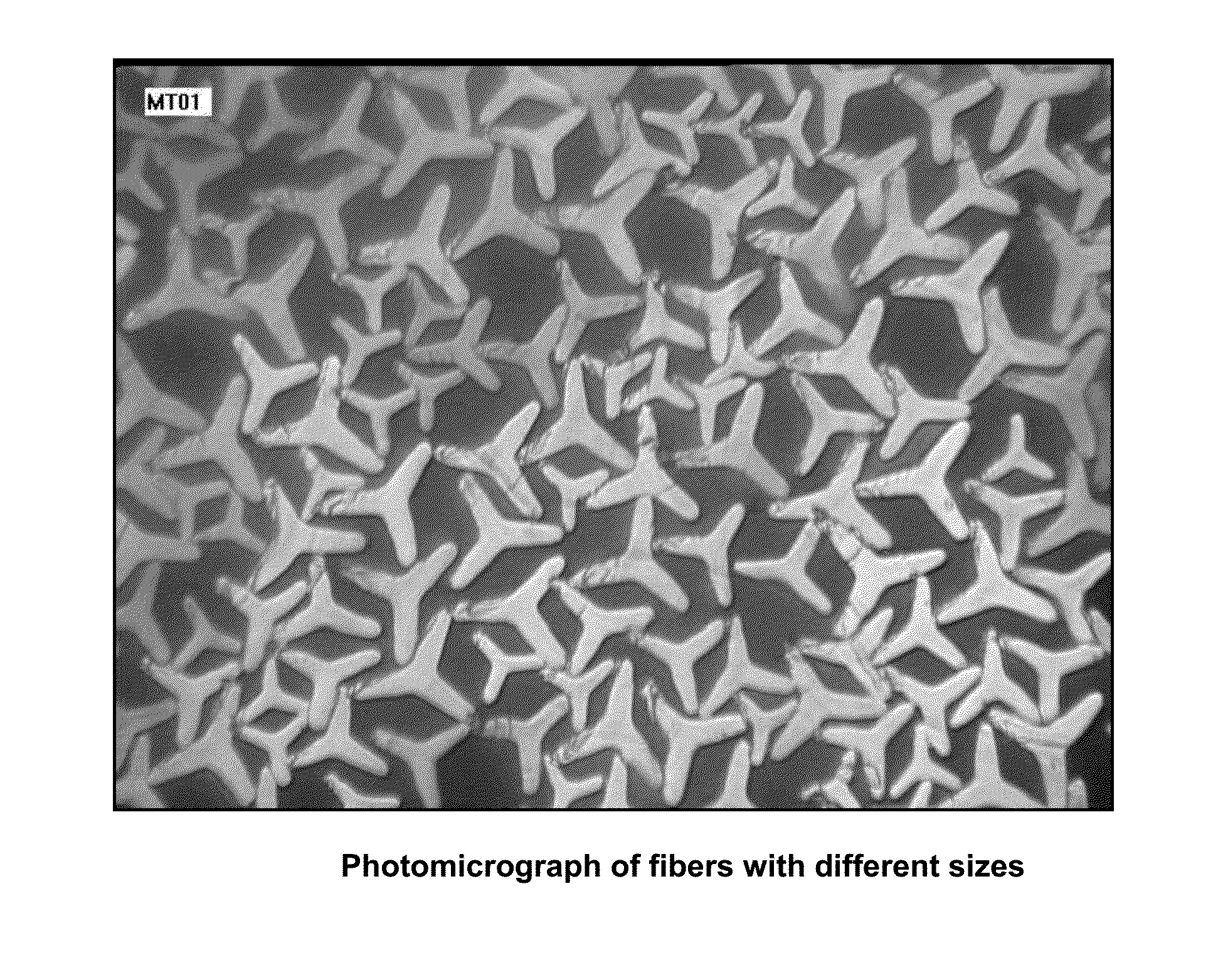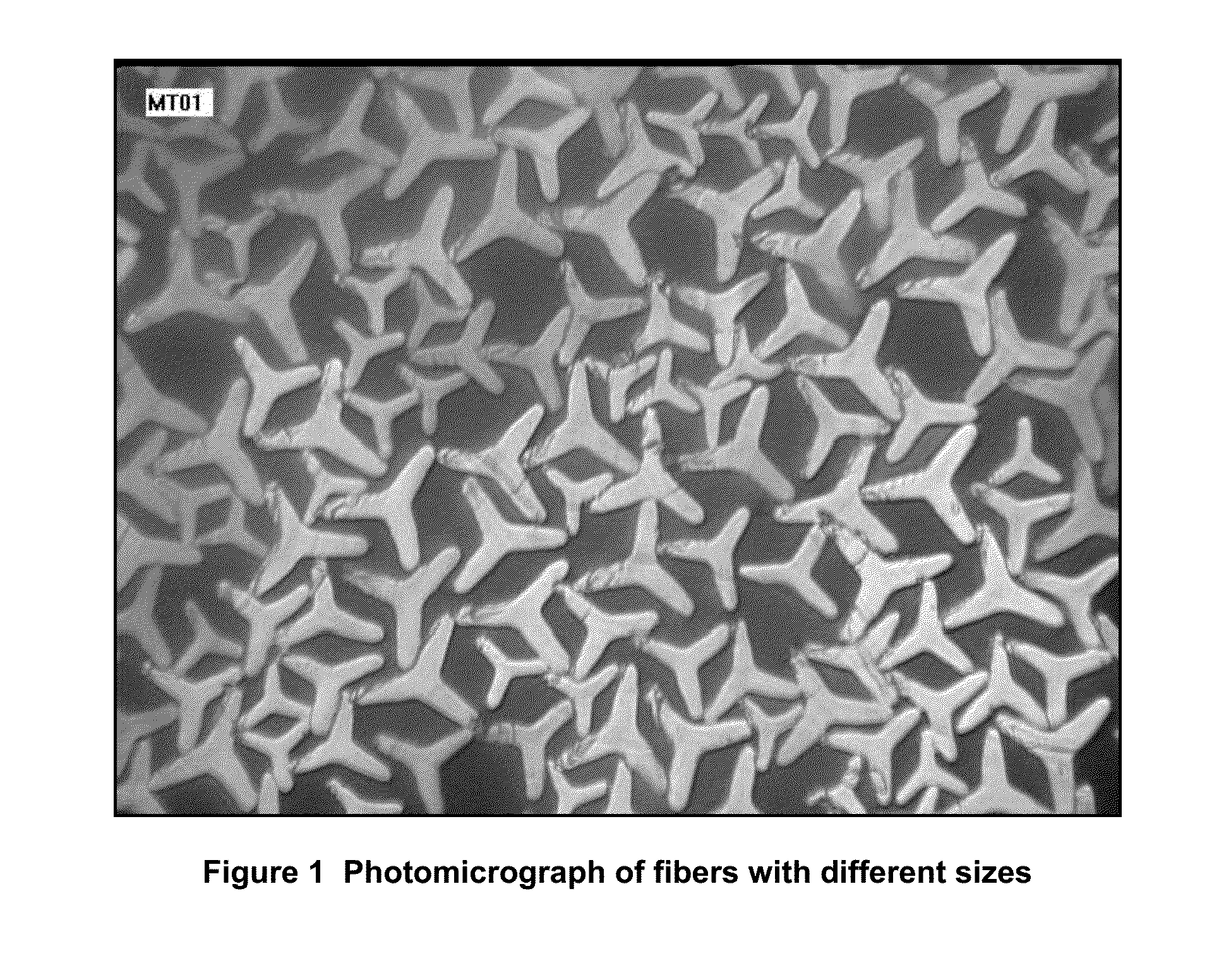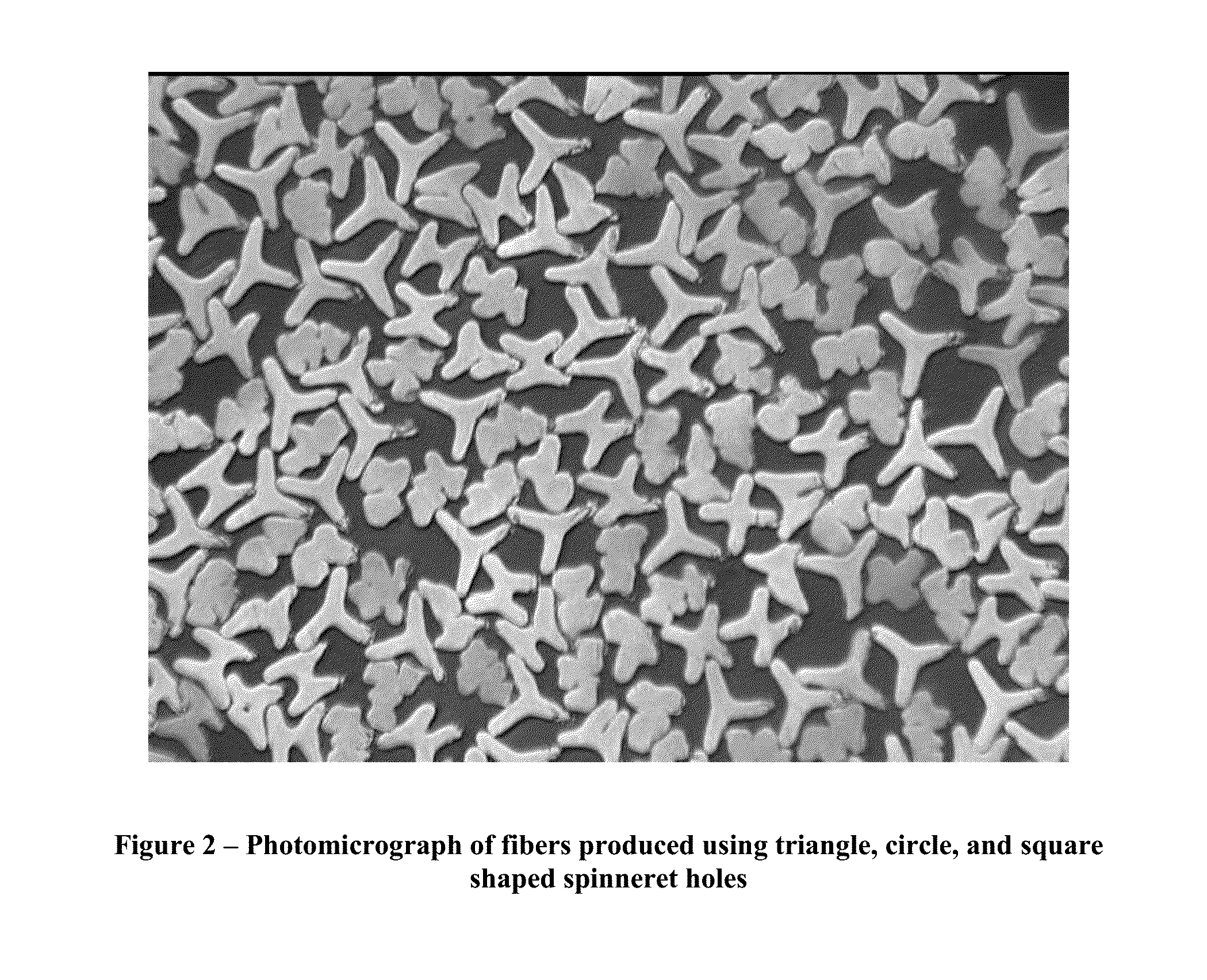Method for making an acetate tow band with shape and size used for coding
a technology of acetate and tow bands, applied in the field of fibers, can solve the problems of more overt solutions that are often susceptible to countermeasures such as destruction, modification, repackaging, or relabeling
- Summary
- Abstract
- Description
- Claims
- Application Information
AI Technical Summary
Benefits of technology
Problems solved by technology
Method used
Image
Examples
examples
Sample Preparation for Fibers
examples 1 and 2
[0419]The fibers were washed with ether solvent to remove the spin finish and dyed red. The fibers were then stretched across a frame and epoxied together to form a rigid rod of encapsulated fibers. The epoxied rod of fibers was cut perpendicular to the fiber axis to form a sample of 3 micron thickness. The sample was placed endwise on a microscope slide with cover plate and observed and photographed under a microscope.
Sample Preparation for Filter Rods
examples 3-16
[0420]25 g of Electron Microscopy Sciences® Epo-Fix low viscosity resin with 3 g of hardener were mixed together. To the mixture was added 0.5 mL of dye mixture (14 g of ORCO® Orcocil Red B dye in 760 mL of ethanol). The mixture was stirred slowly until it was homogeneous. A 1.5-mL micro centrifugation tube was filled to ¾ capacity with the epoxy mixture. A 10 mm thick specimen from a filter rod was cut and placed on top of the epoxy. The filter was allowed to absorb the epoxy and the tube was placed in a tray and left in a controlled laboratory environment for up to 12 hours to allow the epoxy mixture to harden and embed the filter rod specimen. The specimen was removed from the tube by pitching the bottom of the tube with pliers.
[0421]The specimen was placed in a vice and a jeweler's saw was used to cut the specimen to a size suitable for the polishing chuck. The specimen was polished using the Allied MultiPrep polishing system with the following media and rotation speed sequence....
PUM
| Property | Measurement | Unit |
|---|---|---|
| effective diameter | aaaaa | aaaaa |
| effective diameter | aaaaa | aaaaa |
| effective diameter | aaaaa | aaaaa |
Abstract
Description
Claims
Application Information
 Login to View More
Login to View More - R&D
- Intellectual Property
- Life Sciences
- Materials
- Tech Scout
- Unparalleled Data Quality
- Higher Quality Content
- 60% Fewer Hallucinations
Browse by: Latest US Patents, China's latest patents, Technical Efficacy Thesaurus, Application Domain, Technology Topic, Popular Technical Reports.
© 2025 PatSnap. All rights reserved.Legal|Privacy policy|Modern Slavery Act Transparency Statement|Sitemap|About US| Contact US: help@patsnap.com



